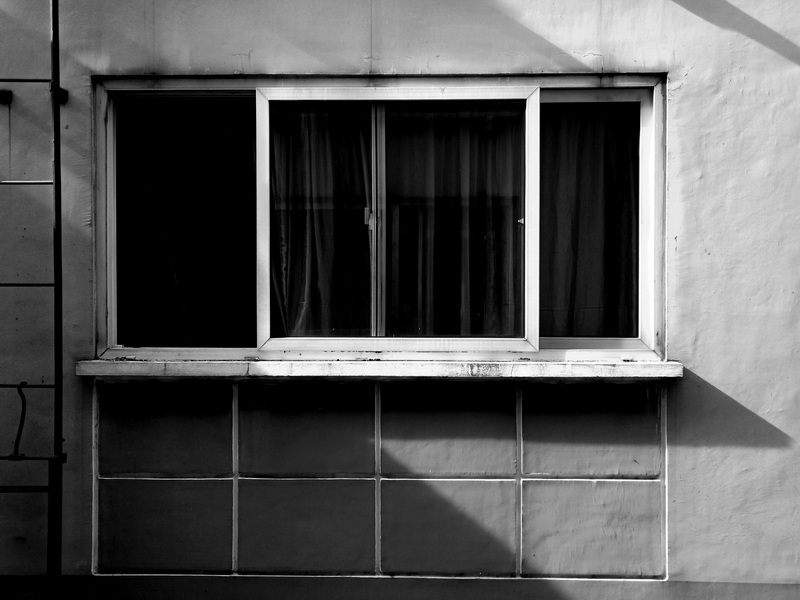English 




Views: 222 Author: Astin Publish Time: 2025-03-13 Origin: Site



Content Menu
● Introduction to Aluminum Window Screen Frames
● Key Factors to Consider When Choosing Mesh
>> 2. Mesh Size and Weave Density
>> 4. Environmental and Climatic Factors
● Step-by-Step Guide to Installing Mesh on Aluminum Frames
● Maintenance Tips for Aluminum Screen Frames
● FAQs
>> 1. Which mesh is best for aluminum frames in coastal areas?
>> 2. Can I install aluminum mesh without professional help?
>> 3. How often should I replace the mesh on my aluminum screen frame?
>> 4. Does mesh color affect insect visibility?
>> 5. Are solar screens compatible with aluminum frames?
Selecting the right mesh for an aluminum window screen frame is critical for balancing durability, visibility, insect protection, and airflow. Aluminum window screen frames are prized for their lightweight yet robust structure, but pairing them with the wrong mesh can compromise performance. This guide explores key factors to consider when choosing mesh materials, installation tips, and maintenance strategies to optimize your aluminum window screens.

Aluminum window screen frames are widely used in residential and commercial settings due to their resistance to rust, corrosion, and warping. Unlike wood or vinyl frames, aluminum frames retain their shape under extreme weather conditions, making them ideal for coastal areas or humid climates. However, the mesh material chosen for these frames determines their functionality, longevity, and aesthetic appeal.
The mesh material directly impacts durability, visibility, and insect resistance. Below is a comparison of popular options:
Material | Pros | Cons |
Aluminum Mesh | High durability, UV-resistant, corrosion-proof, long lifespan. | Prone to denting, higher cost, challenging DIY installation. |
Fiberglass Mesh | Affordable, flexible, easy to install, resistant to creasing. | Less durable, tears easily, fades under UV exposure. |
Polyester/Pet Mesh | Scratch-resistant, ideal for homes with pets. | Reduced airflow, limited color options. |
Stainless Steel | Extremely durable, rust-proof, superior pest resistance. | Expensive, heavier, difficult to cut and install. |
Copper Mesh | Natural insect repellent, decorative appeal. | High cost, requires frequent maintenance to prevent oxidation. |
Aluminum mesh is the most compatible choice for aluminum window screen frames due to its shared resistance to environmental stressors. For example, black aluminum mesh offers 18x16 weave density (0.011" wire diameter) and comes in UV-resistant coatings, making it ideal for high-sunlight areas[4][5]. Fiberglass, while cost-effective, is better suited for temporary or low-traffic installations.
Mesh size refers to the number of openings per square inch:
- Standard (18x16): Blocks mosquitoes, flies, and larger insects.
- Fine (20x20 or higher): Prevents tiny pests like gnats and sandflies but reduces airflow by 15–20%.
- Solar Mesh: Blocks up to 70% of UV rays while maintaining visibility[6][9].
For coastal regions, a 16x16 aluminum mesh with a charcoal finish minimizes glare and resists saltwater corrosion[5]. In contrast, pet-resistant polyester mesh (e.g., 14x13 weave) provides added strength against claws.
Mesh color affects visibility and style:
- Black Aluminum: Offers the best outward visibility and UV protection.
- Charcoal Aluminum: Reduces glare and blends with modern exteriors.
- Silver Aluminum: Traditional look but may reflect sunlight uncomfortably[4][6].
Match the mesh color to your window frame or exterior décor. For instance, charcoal mesh pairs well with dark aluminum frames, while silver suits industrial designs.
- Coastal Areas: Opt for powder-coated aluminum mesh to prevent salt-induced corrosion[3][11].
- High Humidity: Stainless steel or aluminum meshes resist mold and rust.
- Extreme Heat: Solar screens with reflective coatings reduce indoor temperatures by up to 7.7°C[9].

- Aluminum window screen frame
- Mesh roll (e.g., 18x16 aluminum)
- Spline roller (concave and convex wheels)
- Utility knife
- Spline cord (0.140"–0.190" thickness)
- Tape measure
- Safety gloves
1. Remove Old Mesh:
Use a flathead screwdriver to pry out the existing spline and mesh. Clean the frame's groove with a cloth[12][14].
2. Measure and Cut Mesh:
Lay the frame on a flat surface. Cut the mesh 1–2 inches larger than the frame on all sides[8][10].
3. Secure Mesh with Spline:
- Step 1: Use the convex roller to press the mesh into the frame's groove, starting at one corner[13][14].
- Step 2: Insert the spline into the groove using the concave roller, applying even tension to avoid wrinkles[12].
- Step 3: Trim excess mesh with a utility knife, angling the blade at 45° to avoid cutting the spline[8][10].
4. Test Fit:
Ensure the screen sits snugly in the window frame. Adjust tension springs or clips if needed[9].
- Over-Tightening Spline: Causes the aluminum frame to warp. Use moderate pressure[12].
- Ignoring UV Ratings: Non-UV-resistant mesh fades within 1–2 years in sunny climates[6].
- Mismatched Spline Size: A too-thin spline (e.g., 0.140" in a 0.190" groove) fails to hold the mesh securely[12].
1. Biannual Cleaning: Wash with mild soap and water to remove dirt and pollen.
2. Inspect for Damage: Check for dents, tears, or loose spline every 6 months.
3. Reapply Lubricant: Apply silicone spray to frames and rollers to ensure smooth operation.
Mesh Type | Cost per Sq. Ft | Lifespan | Best For |
Aluminum | $1.50–$3.00 | 10–15 years | Coastal homes, high sun |
Fiberglass | $0.50–$1.50 | 3–5 years | Budget-friendly, DIY |
Pet-Resistant Polyester | $2.00–$4.00 | 7–10 years | Households with pets |
Stainless Steel | $4.00–$6.00 | 20+ years | Commercial buildings |
Choosing the right mesh for an aluminum window screen frame requires balancing durability, climate needs, and budget. Aluminum mesh remains the top choice for its corrosion resistance and longevity, while fiberglass suits temporary solutions. Always prioritize UV-resistant coatings in sunny areas and fine weaves in bug-prone regions. Proper installation and maintenance ensure your screens deliver decades of reliable service.

Powder-coated aluminum mesh (e.g., charcoal or black) resists saltwater corrosion and UV damage, making it ideal for coastal climates[3][5].
Yes, but use a spline roller and follow step-by-step guides to avoid warping the frame. Aluminum's rigidity makes DIY installation challenging compared to fiberglass[8][12].
Aluminum mesh lasts 10–15 years with proper care. Replace it if you notice tears, excessive fading, or difficulty opening/closing the screen[4][11].
Dark colors like black or charcoal reduce glare, improving outward visibility. Insects are equally deterred regardless of color[4][6].
Yes. Solar mesh (e.g., 80% UV-blocking) pairs well with aluminum frames, reducing heat gain without compromising airflow[9][11].
[1] https://www.dapaproducts.com/which-window-screen-mesh-aluminum-fiberglass/
[2] https://www.jswireweaving.com/news/aluminum-vs-stainless-steel-window-screen-mesh.html
[3] https://nickel-wiremesh.com/news/advantages-of-window-screen-mesh-made-of-aluminum-and-copper/
[4] https://www.metroscreenworks.com/rolls-of-screen-all-types/aluminum-screening/
[5] https://www.wiremesh-goldenmetal.com/wire-mesh/aluminum-insect-window-screen.html
[6] https://www.linkedin.com/pulse/detailed-guide-choosing-mesh-screen-windows-ykmwiremesh
[7] https://www.ykmgroup.com/how-to-choose-mesh-screen-for-windows/
[8] https://www.youtube.com/watch?v=t8vEnet3V14
[9] https://www.airtasker.com/us/guides/how-to-install-window-screen/
[10] https://www.smartexscreen.com/a-how-to-install-window-screen-mesh.html
[11] https://themeshcompany.com/screen-test-aluminium-vs-fibreglass-mesh-for-bug-free-living/
[12] https://www.wirescreen.org/installation/index.html
[13] https://www.youtube.com/watch?v=AUr2W35Unc4
[14] https://www.youtube.com/watch?v=UMDuYmHTabU
[15] https://www.doctorscreen.com/benefits-of-aluminum-screens/
[16] https://www.metroscreenworks.com/blog/window-screen-mesh-buying-guide-types-of-window-screens-for-any-project/
[17] https://revitalizewindowsanddoors.com/how-to-choose-the-right-window-screen-mesh-for-your-home/
[18] https://www.phifer.com/product/heavy-duty-aluminum-screen/
[19] https://www.marvin.com/products/design-options/screens
[20] https://www.walcoom.com/pdf/window-screen.pdf
[21] https://unitedglassaurora.com/blog/08/2018/heres-your-window-screen-selection-guide/
[22] https://www.youtube.com/watch?v=p2mJcPXyhYE
[23] https://www.youtube.com/watch?v=mDBGf5mYa8M
[24] https://windowhardwaredirect.com/blogs/news/a-complete-guide-on-how-to-install-window-screen-without-frame-for-your-home
[25] https://www.jswireweaving.com/news/advantages-of-window-screen-mesh-made-of-aluminum-and-copper.html
[26] https://www.affordablewindowscreens.com/blog/post/types-window-screen-frames
[27] https://www.qualitywindowscreen.com/does-aluminum-or-plastic-make-a-better-window-screen.html
[28] https://www.lowes.com/n/buying-guide/replacement-window-screen-buying-guide
[29] https://www.qualitywindowscreen.com/window-screen.html
[30] https://windowscreensnow.com/screen-mesh/aluminum/48-x-100-aluminum-screen-mesh
[31] https://www.jswireweaving.com/window-screen-mesh/aluminum-window-screen.html
[32] https://oknoplast.us/a-buyers-guide-to-choosing-the-right-replacement-window-screens/
[33] https://windowhardwaredirect.com/blogs/news/guide-to-finding-the-best-window-screen-replacement-parts
[34] https://gauder.net/en/blogs/ratgeber/fliegengitter-montage-tipps-und-tricks
Top Aluminum Furnitures Manufacturers and Suppliers in Czech Republic
Top Aluminum Furnitures Manufacturers and Suppliers in Poland
Top Aluminum Furnitures Manufacturers and Suppliers in Belgium
Top Aluminum Furnitures Manufacturers and Suppliers in Finland
Top Aluminum Furnitures Manufacturers and Suppliers in Denmark
Top Aluminum Furnitures Manufacturers and Suppliers in Greece
Top Aluminum Furnitures Manufacturers and Suppliers in Portugal
Top Aluminum Furnitures Manufacturers and Suppliers in Austria
Top Aluminum Furnitures Manufacturers and Suppliers in Norway
Top Aluminum Furnitures Manufacturers and Suppliers in Sweden
